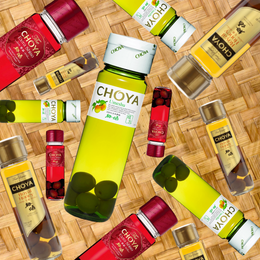Floor Malting – Fact or Fiction? Or if you don’t know what it is, we’ll tell you all about it and why it matters (or not).
Delve deep enough into the world of whiskies and you may find yourself in the middle of a debate about whether floor malting is just marketing fluff or it’s the stuff that creates legends.
Now if you’re unfamiliar with the term, fret not, it’s something that is rarely done by distilleries these days, but we’ll catch you up.

A maltsman raking (or turning) the malting barley. This is done 3 times a day for four days. And you won't walk two more blocks over for that cup of coffee. (Image Source: Distiller)
What it is
Floor malting is the traditional process of allowing steeped barley (or more broadly grains) to be spread across a smooth concrete floor while it is still wet, to allow it to germinate – the process of malting. This is process by which barley produces sugar which is then fermented into alcohol.

The process of turning grain into alcohol is as old as time. The traditional floor malting process harkens back to the 3rd Century AD and allows maltsman greater control over the malting process. (Image Source: Whisky.com)
This process dates back all the way to the 3rd Century AD and is highly – and I mean highly – laborious. Not only is the wet barley spread across the concrete floor through physical labour (typically by hand using a shovel), over the next 4-5 days, the barley has to be regularly turned about three times a day. After which the barley is then collected (physically of course) and toasted over a kiln to stop the malting process.

Into the kiln it goes! Malted barley needs to be toasted to stop the germination process and be ready for mashing where it is ground up for fermentation. (Image Source: Riverbend Malt House)
Sounds tiring? You bet.
And this doesn’t even include the tricky bit of climate control to ensure the barley malts properly.
In days of yore, this was a job that was so labor-intensive that distilleries had dedicated maltsman for the job. These days however, most distilleries have turned to more modernized processes to achieve the same outcome, for the most part incorporating machines and automation to reduce workloads.

A notably eastern-looking architectural feature adorns several Scottish distilleries. These pagodas are actually cupolas that allowed for adequate ventilation for the floor malting process. (Image Source: Undiscovered Scotland)
In fact, if you observe closely, you’ll notice some distilleries spot little pagodas (to be architecturally sound, they are actually cupolas) – not something you’d associate with western architecture. Well, these exist for the purpose of the floor malting process, so that the malting barley gets the fresh air it needs and kilns have an outlet for its exhaust.
So if floor maltings are so damn troublesome (and expensive and yields less), why do it at all?
Traditions, traditions, traditions.
Most distilleries who still do it are happy to admit that it helps keep tradition alive and maintains a certain authenticity and definitely has a huge emotional appeal to whisky fans. Traditions matter y’know? After all, a great deal of whisky appreciation comes from a venerable respect for the craft and the heritage we’re sipping into.
A true labour of love!

Left or right? Which would you choose? There is certainly something to be said about handcrafted products; simply the thought about the love, effort and attention to detail makes it seem more authentic. (Image Source: Springbank Distillery, Difford's Guide)
A handcrafted piece of furniture is much more worth talking about than something that came out of a factory, even if they generally face the same outcome of having objects strewn over them.
Apart from that, the lines of worthwhile-ness becomes blurry. While most distilleries maintain it’s not essential, they also happen to the ones who had done away with it to help on the budget and process flow side of things.
The unquantifiable experience of maltsmen
Yet, the handful of distilleries that continue to do it maintain that maltsmen are experts in their own right with the ability to judge if the malt is ready just by observing the texture of the seeds. They are able to tell if it is of the right softness and what bodes for the seedling nestled inside. They know the right ambient temperature needed for each unique batch of barley.

While highly laborious, maltsmen ensure the barley is malted to perfection, treating each batch of barley as unique in its own right. At distilleries like Balvenie, they are an indispensable core part of the team. (Image Source: The Balvenie)
All of this is key to ensuring the right flavors emerge as every batch of barley is unique and cannot be treated in a standardized manner.
Based off the desired flavors and the intended treatment of the distillate, maltsmen get to work ensuring the barley is malted to perfection for their subsequent journey to becoming whisky.
Is there any science behind it?
A more scientific justification for floor malting is the Maillard reaction. The Maillard reaction is a chemical reaction between amino acids and reducing sugars that gives browned food its distinctive more umami flavors. This occurs during the kilning process where malted barley is toasted to stop the germination process. This is said to create hundreds of unique flavor compounds and the resultant aromas of roasted, nutty biscuits or toffee.
It is after all nicknamed the "flavor reaction" in the culinary world.

We're all familiar with the umami - slightly bitter nutty taste to the charred crisp on grilled foods, that is a highly reductive but tastier explanation of the Maillard reaction. (Image Source: The Durango Herald)
Most distillers who use floor malting also claim that their whisky has a more desirable roughness to their taste, and flavors are more intense and robust, some also finding that the process creates naturally sweeter whisky.
Yet, it should be noted that the Maillard reaction is highly complex and while it is widely used in the culinary world and probably unknowingly in your kitchen, it is still not perfectly understood.
My take
In all honesty, of the floor malted whiskies I've tried, I certainly liked them, they've definitely been intense and really a mouthful of flavor. Am I willing to say it is definitively the floor malting? That I am not ready for.
If you see a floor malted whisky should you take a bet on it? YES, a resounding yes.
If not to try your hand at solving this century old debate, at least give it a try for the sheer amount of work gone into it and the keeping of traditions alive. A toast that writes itself, really.

Chichibu stands among a pantheon of great distilleries that continue to keep the tradition of floor malting alive. (Image Source: xlysauc.com)
Whatever the case is, whether it be for the sake of tradition or if there’s truly to special to the taste, the handful of respectable distilleries that have opted to keep the process are certainly in good company; from Islay legends Laphroaig, Bowmore and Kilchoman, to Orkney’s Highland Park, Campbeltown’s Springbank to Speyside’s own Balvenie and Benriach, it is a veritable list of who’s who.
Even Japan's own legend in the making, Chichibu has found a way to do it despite having less than 10 staff (poor staff, they must be overworked!).
If their legendary statuses have lasted time and tide, surely they must be doing something right?
Or is that survivorship bias talking?
Well that’s enough talking about whisky for one night, now it’s time to think less and drink more.
Kanpai!

@111hotpot





